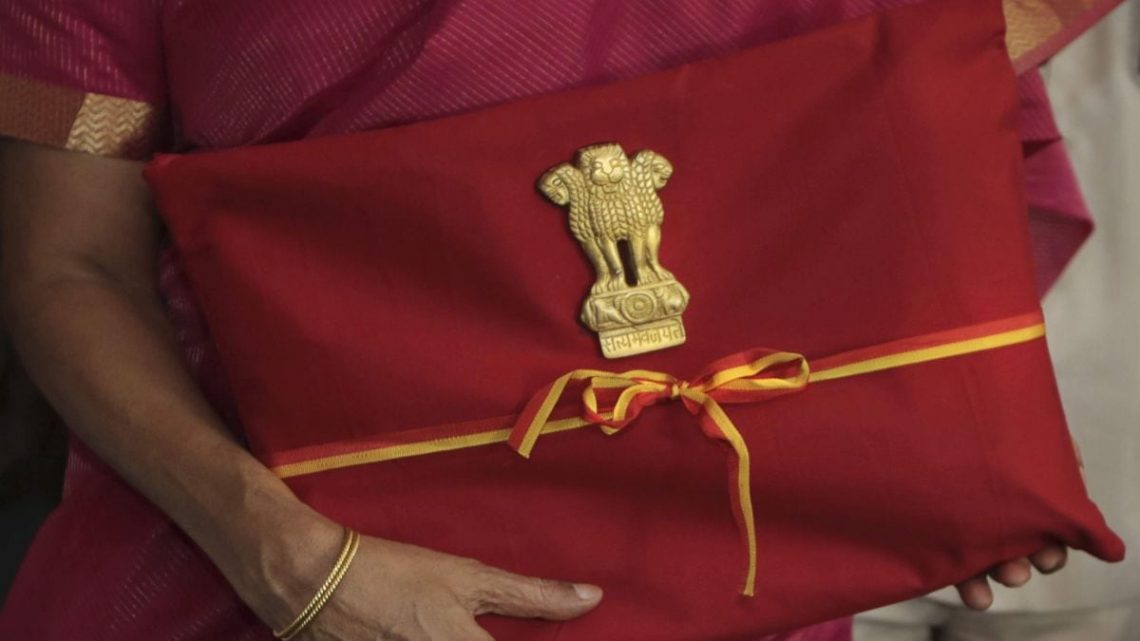Set to make history with her eighth consecutive Union Budget, India’s Finance Minister Nirmala Sitharaman has worked tirelessly with key officials to prepare a budget of over Rs 50 lakh crore for FY26.
Like any other year, this year’s Union Budget will also have to address several challenges. But this year, the key challenges include a decelerating economic growth, a falling value of Rupee against the US dollar — amid an acute change in American politics after the return of Donald Trump to the White House as he threatens with tariff hike at the drop of a hat — and moderation in consumption demand despite several measures taken by the government.
The economic growth is estimated to slow to a 4-year low of 6.4 per cent in FY25. This is the lowest growth since the outbreak of the Covid pandemic which hit the world in 2019.
To her credit, Sitharaman has steered the Indian economy through many difficult phases, including a once-in-a-century pandemic. She is again confronted with economic deceleration, moderation in consumption, stagnant private investment, and an uncertain geopolitical situation.
The rupee’s health is one of the big challenges that Sitharaman faces as she readies her budget speech. The rupee plunged to an all-time low of 86.7 per US dollar earlier this month.
The uphill task before Sitharaman and her team would be to bolster growth without sacrificing fiscal prudence. The government is also expected to stick to the fiscal glide path of reducing the fiscal deficit to below 4.5 per cent of Gross Domestic Product (GDP) in FY26 amidst various headwinds.
The team, assisting the Finance Minister to frame Budget proposals for 2025-26, includes Revenue Secretary Pandey, Economic Affairs Secretary Ajay Seth, Expenditure Secretary Manoj Govil, Department of Investment and Public Asset Management (DIPAM) Secretary Arunish Chawla, Financial Services Secretary M Nagaraju, and Chief Economic Advisor V Anantha Nageswaran.
Tuhin Kanta Pandey
Finance Secretary and Revenue Secretary Pandey is the oldest hand at the finance ministry who has been involved with the Union Budget making process since October 2019 when he joined DIPAM as Secretary. In September last year, Pandey, a 1987-batch IAS officer from Odisha cadre, was appointed the finance secretary.
The Finance Ministry has six departments – Revenue, Economic Affairs, Expenditure, Financial Services, DIPAM and DPE – and the senior most bureaucrat in the ministry is designated as the finance secretary.
He has been credited with divestment of Air India and PSU dividend policy among others during his tenure as DIPAM Secretary. Before serving as Secretary in the DIPAM, Pandey held many significant positions in the Union government and the Odisha government, in addition to serving a stint in the Regional Office of the United Nations Industrial Development Organisation (UNIDO).
Ajay Seth
Economic Affairs Secretary Seth is the second oldest hand at the finance ministry who has in past handled four Budgets since 2021. The Budget division under his departments anchors the entire Budget making process.
The balance sheet matching between revenue and expenditure and borrowings are all matched by the budget division under him. Seth is credited with heading initiatives such as India’s first sovereign green bond issuance, and the creation of the Infrastructure Finance Secretariat.
Ensuring that the economy stays on the fiscal glide path while charting out the new strategy of targeting the debt-to-GDP ratio will be some of the items that will be on top of Seth’s agenda in the upcoming Union Budget.
Manoj Govil
Expenditure Secretary Govil is a 1991-batch IAS officer of Madhya Pradesh cadre. Govil took charge of the Expenditure department in August 2024. This is Govil’s first stint in Union Budget making. He has a tough task in giving projections for subsidy in the Budget at a time when rupee is weakening.
Arunish Chawla
DIPAM and Department of Public Enterprises Secretary Chawla is a 1992-batch Bihar cadre IAS officer. He took charge in DIPAM and DPE in December 2024. Chawla would have his task cut out to drive privatisation of IDBI Bank, move forward with asset monetisation and streamline the functioning of public sector enterprise.
Chawla holds a Master’s and Doctorate in Economics from the London School of Economics and served as Joint Secretary in the Department of Expenditure in 2014.
M Nagaraju
Financial Services Secretary Nagaraju is a 1993-batch Tripura cadre IAS officer. He has to draw up the roadmap for key reforms such as FDI cap hike in the insurance sector, deal with rising cyber frauds and further improve the health of the banking sector.
For Nagaraju, this is the first brush with Union Budget making as he joined as the Financial Services Secretary in August last year
CEA V Anantha Nageswaran
Nageswaran prepared his third economic survey that was presented in Parliament on Friday. The economic survey sets the tone for the Union Budget every year, giving a picture of the health of the Indian economy.
To boost consumption, the Economic Survey 2024-25 highlighted the growing gap between the rising profits made by the corporate sector and stagnating salaries of the employees. It made a case for greater hikes in salaries of the employees. More money in the hands of employees is expected to boost private consumption — a key driver of economic growth.
Nageswaran was appointed CEA in January 2022 by the government. Nageswaran, an academic and former executive with Credit Suisse Group AG and Julius Baer Group, succeeded KV Subramanian.
The Economic Survey 2024-25 made a strong pitch for Prime Minister Narendra Modi’s ambitious goal of Viksit Bharat 2047. The document underlined that India required to grow at eight per cent per year to become Viksit Bharat (literally, developed India) by 2047.
(With inputs from agencies)
Link to article –
Meet Team Sitharaman as she prepares to present Union Budget 2025 amid many challenges

